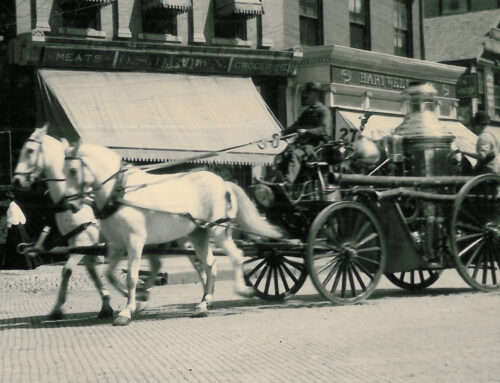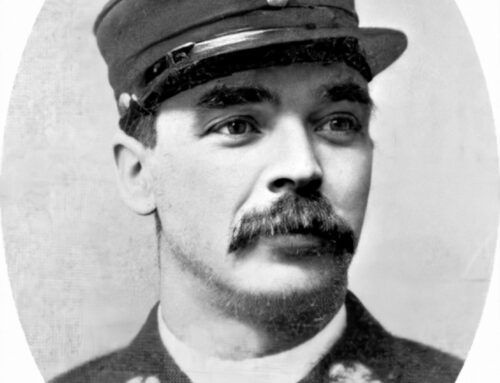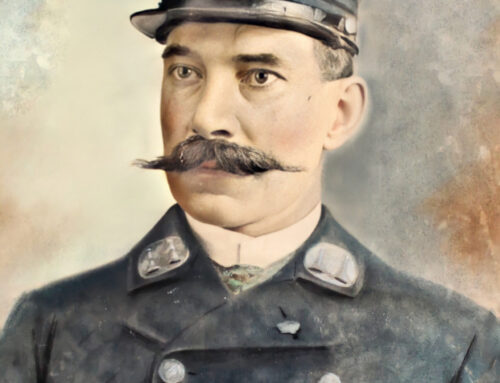John Klinger, a letter carrier, was the first to discover the flames. He was with John McMahon and Frank Greene. The fire reached a stage which drove them out of the building. Hawley Offinger, a special officer, got Walter Williams, a police officer, on the telephone, and he ran out of the building and called the Fire Department on Box 24. Time; 7:05 p.m.: that the fire would be a serious one was not recognized for 15 minutes. Owing to cold weather, there was difficulty with the water supply. No water could be drawn from the Central Park Hydrant. The hose was shifted to a hydrant near Webb’s Dry Goods store opposite the Stamford Savings Bank building on Main Street. A half-hour elapsed before a good stream of water was pouring into the building. One fire engine was not sufficient, for now the flames were roaring throughout the entire structure. There being no horses at the South End Fire Station, the team which had drawn the central engine was sent down to bring up the South End Engine. Within the hour, two streams were shooting into the fiery abyss. The second being drawn from a hydrant in front of the Bell block. The water supply was as a drop in the bucket. The Cook building, a wooden structure in the rear of the Town Hall, was threatened and partially destroyed. The sparks caught in the tower of the wooden Congregational Church across Bank Street, and for a few minutes that building seemed doomed. . For the third time in the history of the extension ladder, acquired in 1888, it was brought into use. The threatened flame in the church spire was subdued and no further damage was done there. Stiff lighting prevented serious damage to the Miller building. The snow on the roofs of nearby structures, it is generally believed, saved the city from a serious conflagration at its center. By 9:00 p.m. there was little left of the building except the four brick walls. At midnight, no flames searched the skies, but a fire roared in the basement.
Fire apparatus was brought from New Canaan and Greenwich, but the difficulties of travel delayed its arrival so long that there was little service for it to perform when it finally arrived. (In this story, it does not state whether or not Noroton Heights*Lhaild drawn chemical cart was there). The New Canaan and Greenwich engines were hauled by horses.
In view of the inability of the Fire Department to cope with the fire owing to frozen hydrants and insufficient apparatus, the city was very fortunate that the loss was confined chiefly to the Town Hall itself. In terms of value at that time, the building was considered to be worth about $80,000, on which there was insurance of approximately $65,000. The New Town Hall costs approximately $250,000.
— Author unknown








